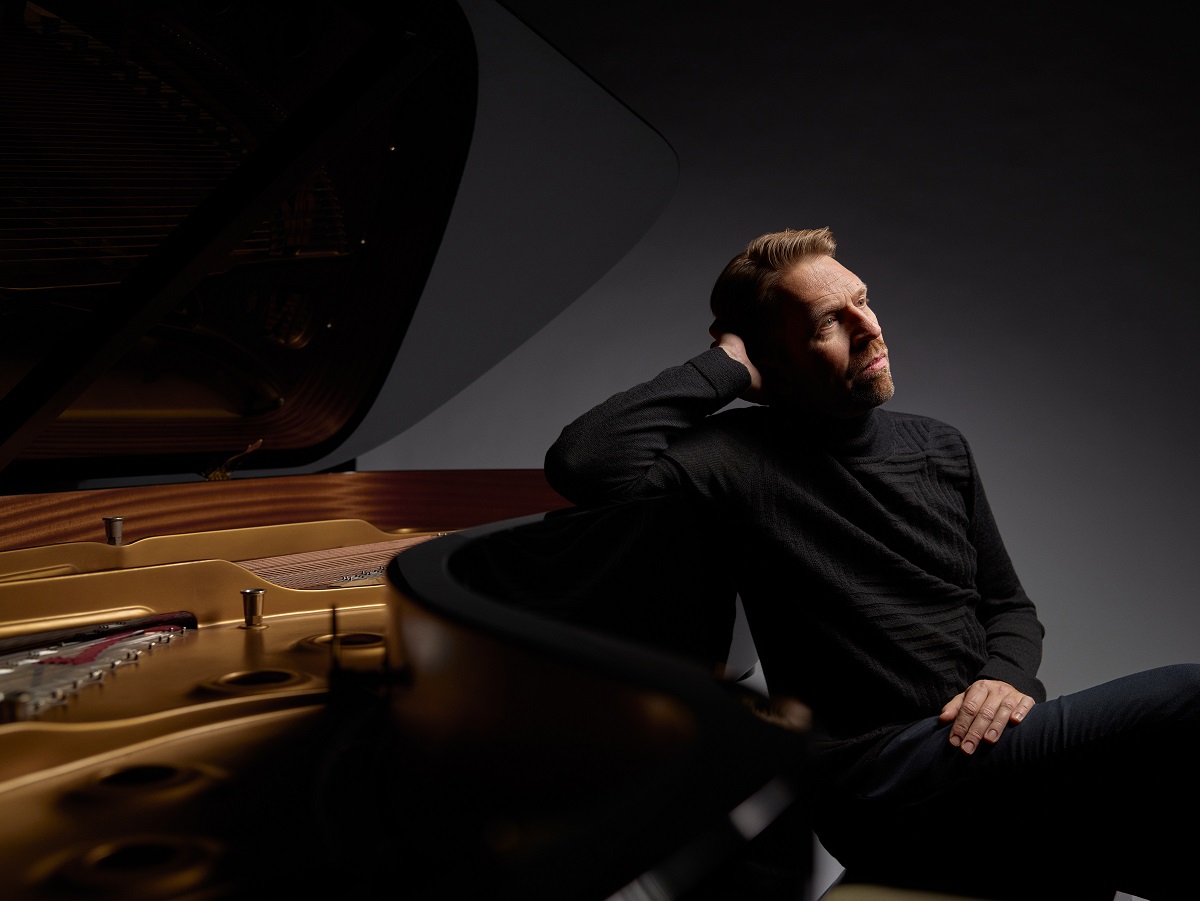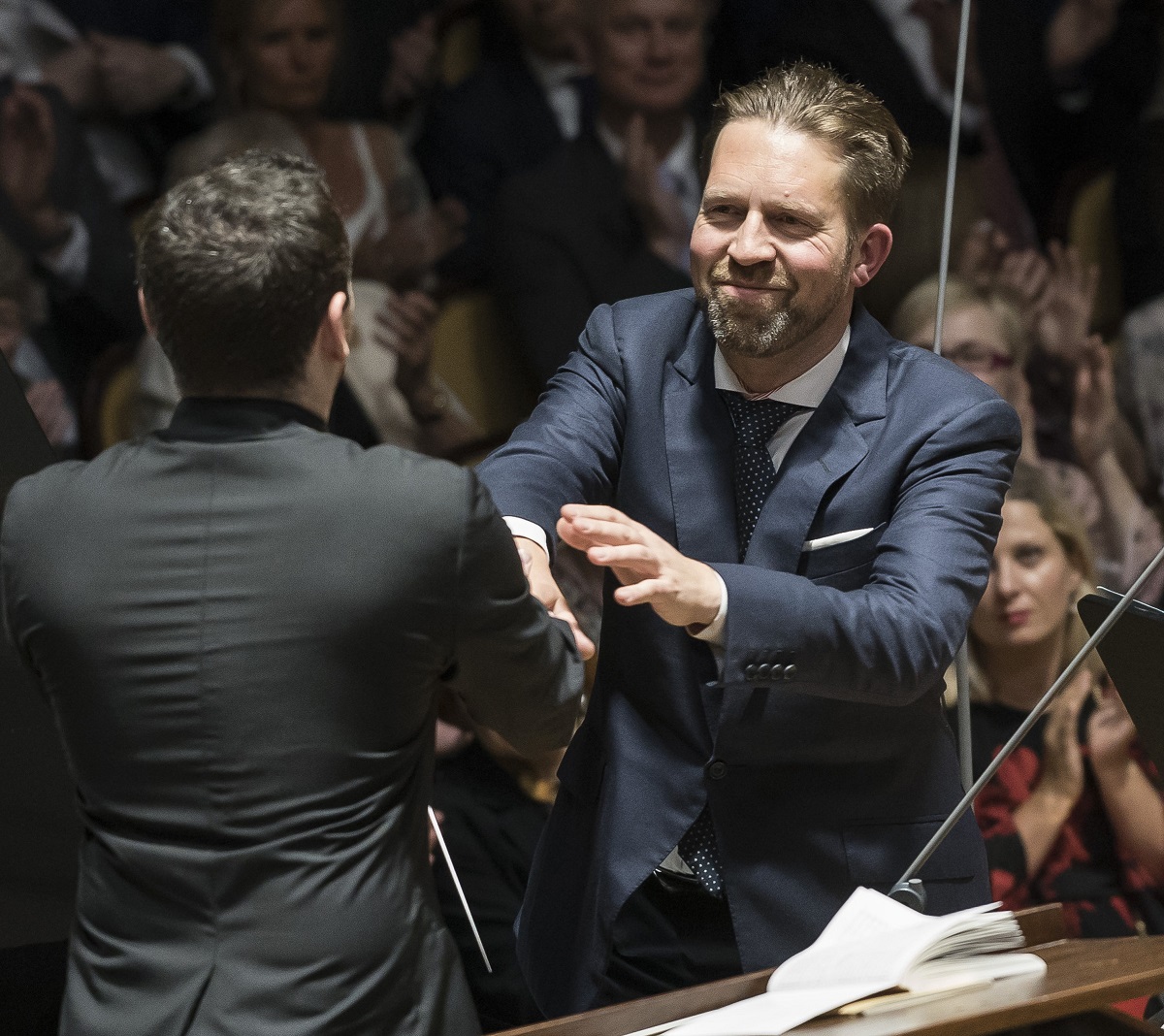Leif Ove Andsnes
Program
- Alexandr Vustin: Lamento
- Leoš Janáček: Piano Sonata 1. X. 1905 „From the Street“
- Valentin Silvestrov: Bagatelle Op. 1 No. 3
- Ludwig van Beethoven: Piano Sonata No. 8 in C minor Op. 13 "Pathetic"
- Antonín Dvořák: Poetic Tone Pictures Op. 85
Interpreti
- Leif Ove Andsnes - piano
Extraordinary courage
One of the most successful pianists around today, Leif Ove Andsnes hails from the Norwegian municipality of Karmøy surrounded by the North Sea, yet he has a very special relationship with Prague and Czech music. The holder of six Gramophone Awards and eleven Grammy nominations, he included Smetana’s Concert Étude On the Seashore on his debut album aged only seventeen, and he recorded the major solo works of Leoš Janáček at the age of twenty-one. He is currently also one of the few world pianists whose repertoire includes the complete Dvořák cycle Poetic Tone Pictures; given its nearly fifty minutes’ duration and the considerable challenges it places on the player, the cycle rarely features on concert programmes, and even then only as a selection. In fact, the composer himself predicted that this might prove to be the case, when he noted in one of his letters that not many would find the courage to tackle the work.

Hall of Fame
Andsnes’s love for Czech music was nurtured by Jiří Hlinka, a professor of Czech origin with whom he studied at Bergen Music Conservatory, and also by his parents, who were music teachers. Thanks to the latter he heard Dvořák’s Poetic Tone Pictures when he was still a child. “I’ve always loved them. It’s a mystery to me that they’re not better known outside the Czech Republic, because they’re really prime-time Dvořák,” says the pianist, who is no stranger to ambitious projects. He appeared at the Prague Spring in his role as both soloist and conductor with the Mahler Chamber Orchestra; together they presented “The Beethoven Journey”, a project showcasing the complete series of Beethoven piano concertos. The majority of the music was recorded during festival concerts in the Rudolfinum. In 2019 he teamed up with the same orchestra for the project “Mozart Momentum 1785/1786”. The critics have an extremely high regard for the Norwegian artist. In 2013 he was inducted into coveted Gramophone magazine’s Hall of Fame. “He would be on many critics’ shortlists of the top ten pianists in the world at present,” wrote the American daily Star Tribune two years ago, while The New York Times described him as “a pianist of magisterial elegance, power, and insight.”

Personal Artist’s Statement on Programme
Leoš Janáček’s tribute to a worker who was killed in a demonstration on October 1st 1905 is frightfully relevant today. As I write these lines (end of September 2022), young Iranian demonstrators are being killed on the streets of Tehran, and brave Russians get out in the streets to voice their opinion against a devastating war, risking their lives. Janáček’s sonata is full of the anger and sadness we feel at this time, being confronted with the meaningless war in Ukraine.
As an epilogue after the Janáček I will play one of Ukrainian Valentyn Sylvestrov’s Bagatelles, dreamy fragments that seem to tell us about a time that has passed, or hopes for something better.
In 2019 I invited the 76-year-old composer Alexander Vustin to the Rosendal chamber music festival in Norway. It was only his second time outside Russia. Clearly marked by the years of oppressive regime in his country, it was most touching to get to know him and his music, but also to see him listen with his whole being to performances of Shostakovich at the festival. It saddened me deeply to hear that he had passed away during the first wave of Covid infections in Moscow in April 2020.
There is anger in Beethoven’s Sonata “Pathétique”, too. The sudden outbursts and pianistic effects in the first movement were shocking for their time – for example, the constant bass tremolo and the crossing of hands in the second theme can still feel radical to us today. The other movements provide relief and contrast: the melodies of the second movement are all-embracing and the final Rondo moves between energy, drama, and grace in a very Mozartian spirit.
The pandemic gave me the possibility to study the strangely neglected Poetic Tone Pictures Op. 85 by Dvořák. The composer meant for this to be a cycle, not only a set of pieces, and I love the programmatic mixture of high and low. Poetic short stories like Twilight Way or At the Old Castle exist side by side with triviality in Toying or Tittle-Tattle. There is intimacy in Rêverie, drama in At a Hero’s Grave, wild virtuosity in Bacchanalia, and a Serenade which develops into the most touching of love songs. It has been a truly wonderful discovery to study these pieces; life-affirming music of the greatest invention and imagination.




